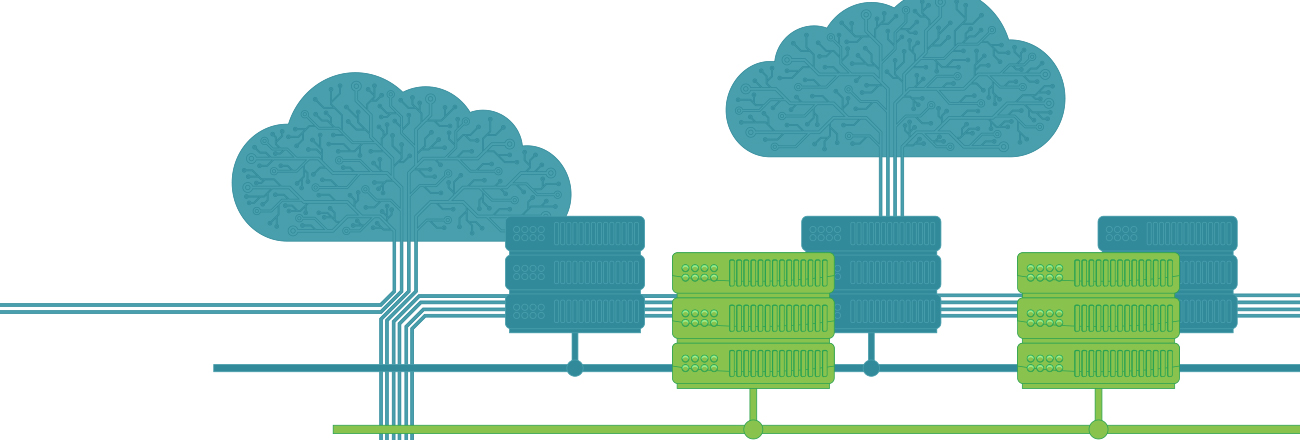Month: June 2012

 One only needs to type in “summer” in the search window of your favorite online music store for a mountain of tunes to pop up: Will Smith’s Summertime and the same named song, although not the same, by New Kids on the Block. Who can forget (especially those of you who watched the movie at least a dozen times) John Travolta and Olivia Newton John in Grease swooning to Summer Nights and I’m certain all you disco fans have tapped a toe or two to Donna Summer’s Endless Summer. I tend to favor Kid Rock’s All Summer Long, but I think most of us would agree that summer wouldn’t be summer without the Sounds of Summer album by the Beach Boys.
One only needs to type in “summer” in the search window of your favorite online music store for a mountain of tunes to pop up: Will Smith’s Summertime and the same named song, although not the same, by New Kids on the Block. Who can forget (especially those of you who watched the movie at least a dozen times) John Travolta and Olivia Newton John in Grease swooning to Summer Nights and I’m certain all you disco fans have tapped a toe or two to Donna Summer’s Endless Summer. I tend to favor Kid Rock’s All Summer Long, but I think most of us would agree that summer wouldn’t be summer without the Sounds of Summer album by the Beach Boys.
While the thought of any and all these songs brings back my own fond memories, there is a dark side to summer for most Internet-dependant businesses that they would rather forget, or at least not have to address. Summertime is one of the worst parts of the year for businesses running their own data centers. The costs of power and cooling go up, up, up… right along with the temperature. Not to mention the high propensity for summer storms to bring with them high winds, flooding and treacherous tornadoes and hurricanes.
But don’t get hot under the collar just yet… there is a way to work around these rising expenses and potential catastrophes. Here are some articles this week that address these very issues:
- Take greening beyond the data centre with intelligent management solutions
- Ambient Air Cooling
- Efficiency Key to Meet Data Center Power Demand
- Metrics and Economizer Mode Data Center Cooling
- Colocation can help companies save money in the summer heat
So next time you are considering your skyrocketing bills, check out colocation. Oh and while you are at it, check out our “cool” and power-efficient data centers in major metropolitan areas, including Atlanta (new expansion in 2012!), Boston, Dallas, Houston, New York, Santa Clara and Seattle, plus Los Angeles – coming soon!
Explore HorizonIQ
Bare Metal
LEARN MORE

 Did you know the utilization of the cooling and power infrastructure in some data centers or network rooms is typically around 50 – 60% and that it may stay that way for the entire life of the data center? Since the relationship you have with your colocation or data center provider is one that will most likely last a while, these inefficiencies can represent challenges to you, the IT professional. For example, as servers and storage devices require extra computing power, more resources are needed to cool and power the data center. A provider that offers maximum efficiency will be in your best interest as they can provide advanced scalability and high-density solutions. The good news is the unused capacity of data centers is an avoidable capital cost, and it also represents avoidable operating costs from a maintenance and energy standpoint. One of the main ways this is achieved is through scalability and modular designs.
Did you know the utilization of the cooling and power infrastructure in some data centers or network rooms is typically around 50 – 60% and that it may stay that way for the entire life of the data center? Since the relationship you have with your colocation or data center provider is one that will most likely last a while, these inefficiencies can represent challenges to you, the IT professional. For example, as servers and storage devices require extra computing power, more resources are needed to cool and power the data center. A provider that offers maximum efficiency will be in your best interest as they can provide advanced scalability and high-density solutions. The good news is the unused capacity of data centers is an avoidable capital cost, and it also represents avoidable operating costs from a maintenance and energy standpoint. One of the main ways this is achieved is through scalability and modular designs.
Let’s take a UPS (Uninterruptible Power Supply) as an example of how modularity and scalability can increase efficiencies. With a scalable UPS, power is provisioned for what is required today which means the UPS runs at a higher efficiency. Later, as a tenant increases their IT load, more UPS modules can be added to meet the increased load. A scalable UPS also ensures that power is never stranded. For example, if the average rack density in a data center were very low, it’s possible that the colocation service provider could sell out of all available space. If this were to happen, a scalable UPS allows a provider the flexibility to build more space and increase the UPS capacity to support the new space. Tenants also have the flexibility to increase their average rack density knowing that more UPS capacity can be provisioned.
Row-based cooling is another example of how modularity increases efficiency and provides flexibility to tenants. Room-based cooling typically provides a base-cooling capacity for data centers up to about 6kW/rack. When tenants choose to increase their IT rack density, they have the ability to meet that cooling requirement using row-based cooling which places the cooling unit adjacent to the IT equipment. Not only is this efficient, but it also provides predictable cooling for high-density loads. Increasing rack density also provides a lower cost per rack and increases ROI. Colocation providers that have designed their chilled water piping to support row-based cooling units can quickly provision row-based cooling for high-density racks.
So what are the right questions to ask a potential provider to make sure they maximize their resources?
- Are scalable UPS systems used to quickly provision new power capacity?
- What is the full load efficiency of the UPS system?
- Is the chilled water distribution piping provisioned for row-based cooling units?
- What is the maximum supported rack density?
- Are hot and cold air streams managed to avoid air mixing, which reduces cooling capacity?
- Is a capacity management system used to keep power and cooling capacity in line with IT load demand?
The folks at Internap are no strangers to modular design. In fact, their Dallas data center utilizes Schneider Electric’s Symmetra MegaWatt, a modular UPS solution that will allow their facility to keep efficiency levels high while growing over 50,000 square feet. Check out Internap’s Colocation Buyer’s Guide for more information on modular design and other questions to ask when choosing the right data center provider for your business needs.
About Schneider Electric
As a global specialist in energy management with operations in more than 100 countries, Schneider Electric offers integrated solutions across multiple market segments, including leadership positions in Utilities & Infrastructures, Industries & Machine Manufacturers, Non-residential Buildings, Data Centers & Networks and Residential. Focused on making energy safe, reliable, efficient, productive and green, the company’s 130,000 plus employees achieved sales of about 31 billion US dollars (22.4 billion euros) in 2011, through an active commitment to help individuals and organizations make the most of their energy.
Explore HorizonIQ
Bare Metal
LEARN MORE

 We are now six races into the Formula 1 season and I’m proud to say that I consider myself a rabid fan. Not an expert, nor an analyst, but a solid fan that is slightly despondent when there isn’t a race during the weekend. I’m comfortable discussing constructors, drivers, the 107% rule, and I’m definitely getting the hang of the qualifying process.
We are now six races into the Formula 1 season and I’m proud to say that I consider myself a rabid fan. Not an expert, nor an analyst, but a solid fan that is slightly despondent when there isn’t a race during the weekend. I’m comfortable discussing constructors, drivers, the 107% rule, and I’m definitely getting the hang of the qualifying process.
So just when I think I have the lay of the land and I can hang with the big boys, all bets are off. It’s Monaco, and it is like no other Grand Prix that I have experienced. Just the site of the track (road) has me perplexed and the twisty turns and tiny streets have me closing my eyes as the drivers careen around them. Suddenly a new term rears its head and is being uttered by my favorite F1 Guru and Speed Network commentator, Bob Varsha, every 2 minutes. Chicane. Pardon? Swimming pool chicane? HUH?? I’m totally stumped.
According to Wikipedia, a chicane is an artificial feature creating extra turns in a road, used in motor racing and on streets to slow traffic for safety.
Hold up. What do you mean you want to slow the drivers down? That seems counterintuitive to me. At Internap, we spend a lot of energy making the Internet faster. It’s essentially in our DNA with our Managed Internet Route Optimizer™ technology – MIRO. In F1 terms, think of MIRO as a DRS zone (that’s Drag Reduction System for the F1 newbies out there) that is always active and never shuts off. Wicked awesome right? Here are a few highlights of our technology:
- MIRO is route and web acceleration software that works with BGP in an automated manner, updating routing tables with the best performing routes available.
- MIRO provides a superior alternative to the manual route selection approach that many data centers employ to compensate for BGP’s inherent deficiencies.
- MIRO gathers data and dynamically responds with intelligent route adjustments, ensuring that data is traveling along the fastest, most reliable route.
So while I try to wrap my head around swimming pool chicanes and other not-so-common F1 terminology, we’ll keep facilitating blazing-fast Internet speeds on our end.
To learn more about Internet acceleration technologies and how we can drive your IT Infrastructure, FAST, download our IP Buyer’s Guide eBook.
Image Credit: Sahara Force India Formula One Team
Explore HorizonIQ
Bare Metal
LEARN MORE

 Trying to decide among the many IT Infrastructure options out there can be dizzying. Should you build your own data center, buy space from a wholesale provider, utilize colocation space or venture into the cloud? So many choices — I know my head is spinning! Lucky for you our own Randy Ortiz, vice president of data center design and engineering, recently broke it down during our webinar, Top Ten Data Center Strategy Success Criteria. Randy has successfully designed and project-managed over one million square feet of mission-critical space and provided technical guidance for the Data Center Journal as its president and executive editor, so he’s pretty much the top dog on the subject.
Trying to decide among the many IT Infrastructure options out there can be dizzying. Should you build your own data center, buy space from a wholesale provider, utilize colocation space or venture into the cloud? So many choices — I know my head is spinning! Lucky for you our own Randy Ortiz, vice president of data center design and engineering, recently broke it down during our webinar, Top Ten Data Center Strategy Success Criteria. Randy has successfully designed and project-managed over one million square feet of mission-critical space and provided technical guidance for the Data Center Journal as its president and executive editor, so he’s pretty much the top dog on the subject.
According to Randy, you must first weigh the pros and cons of each scenario. Here’s a rundown of the options:
1. Build your own data center
Building a data center is a time-intensive process, not to mention expensive. Plus you need expert consultants to walk you through the build and most certainly a dedicated staff to maintain the place. Think large capital investment. Although, you will have all the space you want (indoor rollerblading anyone?), and you can build to suit your individual requirements for security, capacity, redundancy, power… the list goes on and on. Data centers price tags can range wildly depending on which options you choose. Bottom line? Pricey, but highly customizable.
2. Buy wholesale space
Offering lower price points than building your own facility, wholesale can be a great option for those in the market for lots of space but not quite enough to accommodate your own personal marching band. A wholesale provider sells you space in large chunks, otherwise known as “pods.” We’re talking upwards of 5,000 – 10,000 square feet of space here. Another benefit is a lower operating expense if in fact the provider is helping manage the facility for you, but watch out for difficulty in scaling, cooling and power. Wholesale space is available in most key markets, but if you need a presence in small town USA you may be better off considering another option.
3. Purchase colocation services
So to those in the biz, this is also known as purchasing “retail” space. Typical colocation space agreements range from a single cabinet on up to 5,000 square feet. Colocation or “colo” is more cost-effective compared to options one and two, offers high levels of scalability, uptime guarantees, and in almost all cases, can meet certain industry compliance requirements depending on the provider. It’s great for those who want to maintain some level of control over their environment, but don’t need to pick out the wallpaper pattern — so to speak.
4. Host in the cloud
Ah, the almighty cloud. Great for scalability, zero provisioning costs, reduction of IT staff and a plethora of providers to choose from. Be careful which applications you choose to deploy, however, since all applications don’t play nice with the cloud (Quick aside: Check out our eBook The Top 5 Mistakes You Want to Avoid When Becoming a Cloud Superhero for more on this topic). You’ll also want to ask about compliance and security as different cloud species such as private, public and hybrid exist in the wild, and your choices can yield different results.
From here the next step is to examine your own requirements using Randy’s top ten data center strategy criteria, which you can conveniently get by listening to the webinar instant replay. Happy strategizing!
Explore HorizonIQ
Bare Metal
LEARN MORE

It’s hurricane season – will the wind blow and blow and blow your roof down?
 We had unbelievably gorgeous weather this past weekend in Atlanta. Low 80s, low humidity. Very uncharacteristic of June.
We had unbelievably gorgeous weather this past weekend in Atlanta. Low 80s, low humidity. Very uncharacteristic of June.
But with it being early June, I am reminded this is the start of hurricane season in the Atlantic and until November 30th, there is a much higher propensity for these often devastating storms to hit our coastlines and severely impact inland areas. So why do I mention this?
If you have a disaster recovery plan in place for your business, that is great. But many businesses don’t. Worse yet, of more than 6,000 IT practitioners from 18 countries, only 53 percent of survey respondents felt confident their organizations can recover from a disaster. Should a disaster occur, can your company effortlessly pull together resources necessary for a swift recovery? Some considerations are in my mashup this week:
- Business Continuity: Dealing With Disaster
- Disaster Recovery: A Lesson in Business Responsibility
- SMBs adopting cloud computing for disaster preparedness
- Business Continuity and Disaster Recovery Planning: The Basics
- Businesses Consider Mobile Security Services & Cloud A Top Priority For Disaster Planning: AT&T Study
As I mentioned in a post not so long ago: Ready or not the storm is coming. Are you prepared? Check out our new and expanding data center facilities in Dallas, LA and Atlanta, if you are in the market for a safe, redundant environment for your IT Infrastructure.
Explore HorizonIQ
Bare Metal
LEARN MORE

 A networked society seems to be the next frontier in many eyes. In the age of smartphones and clouds, where a new business can be online in a matter of minutes, opportunities are emerging at a speed never seen before. Are we the last generation to know a “dumb society?” The pre-smartphone generation, if you will?
A networked society seems to be the next frontier in many eyes. In the age of smartphones and clouds, where a new business can be online in a matter of minutes, opportunities are emerging at a speed never seen before. Are we the last generation to know a “dumb society?” The pre-smartphone generation, if you will?
Future generations will only know a world where you can be connected no matter where you are or what you are doing. Today you can send an email launching your new business while catching a cab to the airport. The medical industry is developing sensors that monitor the data coming from our bodies, and by analyzing this data we now have the ability to optimize our medical outcomes and be healthier. In the education space, Ivy League schools publish a video online for thousands, or even millions, to view and learn from. From now on, all future generations will be living in an intelligent, connected era. Everything that can, will have a chip.
The Internet has become central to this smart world we are creating. That is why the Telecommunications Industry Association (TIA) decided to focus its efforts on the IP network for the upcoming Inside the Network 2012 Conference & Exhibition. This strategic differentiator enables network operators, service providers and key enterprise customers to cope with the changing business climate. Each year, the community of telecom professionals and technology suppliers come together to attend this unique event.
A strong IP network is more important than ever. That’s why we’ve developed a one-of-a-kind Internet latency solution. The industry calls it Managed Internet Route OptimizerTM — but our friends call it MIRO. MIRO analyzes traffic across the Internet and selects the best possible path, every time. Not a bad friend to have, if you ask me!
If you’re in Dallas and want to learn how to keep your business ahead of the curve in this sophisticated-Internap savvy era, visit us at the TIA Inside the Network 2012 Conference and Exhibition June 5-7th in Dallas, Texas, at booth #822.
Explore HorizonIQ
Bare Metal
LEARN MORE

 A couple of my previous blogs have focused on two key aspects of the sport of Formula 1 racing: testing and teamwork. Both of these points lend themselves to better performance, and F1 is all about performance — but just as important is reliability.
A couple of my previous blogs have focused on two key aspects of the sport of Formula 1 racing: testing and teamwork. Both of these points lend themselves to better performance, and F1 is all about performance — but just as important is reliability.
Specific manufacturing methods can give an F1 team parts that will have the best performance available but can only be used one or two times. This means the part is high on performance but low on reliability. On the other hand, F1 teams can also have very reliable parts manufactured, but not gain all the performance from the part needed to win races. This results in high reliability and low performance.
F1 teams need to balance the need for performance (optimization) with the required reliability (durability), based on the FIA rulebook. Here are a couple examples from the FIA rulebook:
Engine limitations: The FIA rulebook states that teams are allowed eight engines total during the season, and that each engine must be used a minimum of two races. If the team tries to use more than eight engines during the season, or switches out an engine after one Grand Prix weekend, the team is penalized. The penalty is usually in the form of the car being pushed down 10 places on the starting grid.
Transmission limitations: The teams are also required to use the same transmission/gearbox for four races. If the team trades out a transmission before the allotted number of races, they are penalized. The penalty is usually in the form of that car being pushed down the starting grid a certain number of positions, usually five.
In each of these scenarios it is all about being able to master this delicate balance of getting the most performance available out of each part and have the part last to gain an edge over other teams. The job of the IT professional is not unlike that of an F1 team – it’s a constant challenge to maintain the right levels of performance while still ensuring your infrastructure is reliably supporting your business. And there really isn’t much room for compromise when it comes to your critical infrastructure. When looking for an IT provider to help you meet those challenges, it’s important to keep a few questions in mind:
- What level of availability do they offer? Meaning what is their uptime percentage?
- What sort of uptime guarantees do they offer in their Service Level Agreement (SLA)?
- Do they offer proactive credits in the SLA? Or do they require you contact them first?
These prospective provider questions and more can be found in many of our buyer’s guide eBooks. Whether you are looking for advice on cloud, colocation, hosting, content delivery or accelerated IP, we’ve got you covered. Just scroll down to the eBooks section on our resources page for some useful summer reading.


